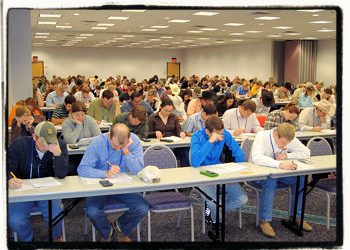Who to Contact:
Alexander “Sandy” Smart, Ph.D.
Agriculture and Natural Resources Program Leader
SDSU Extension
Berg Agriculture Hall132, Box 2207D
Brookings, SD 57007
P: (605) 688-4940
E: alexander.smart@sdstate.edu
URME Instructions/Contest Rules
(Updated November 2019)
Purpose: Provide an opportunity for undergraduate students to demonstrate higher order learning skills and synthesis knowledge of the art and science of rangeland management.
Eligibility: Individuals-Any undergraduate student currently enrolled, or enrolled in the prior semester, as a full-time student may compete for individual honors. Teams-Team scores for each university/college/school will be the sum of the three highest scoring individuals.
Logistics
Contest Awards
CPRM: The CPRM exam requirement will be waived for the top 10 % of students who pass the URME if they apply for CPRM within 5 years of qualifying.

Who to Contact:
Alexander “Sandy” Smart, Ph.D.
Agriculture and Natural Resources Program Leader
SDSU Extension
Berg Agriculture Hall132, Box 2207D
Brookings, SD 57007
P: (605) 688-4940
E: alexander.smart@sdstate.edu